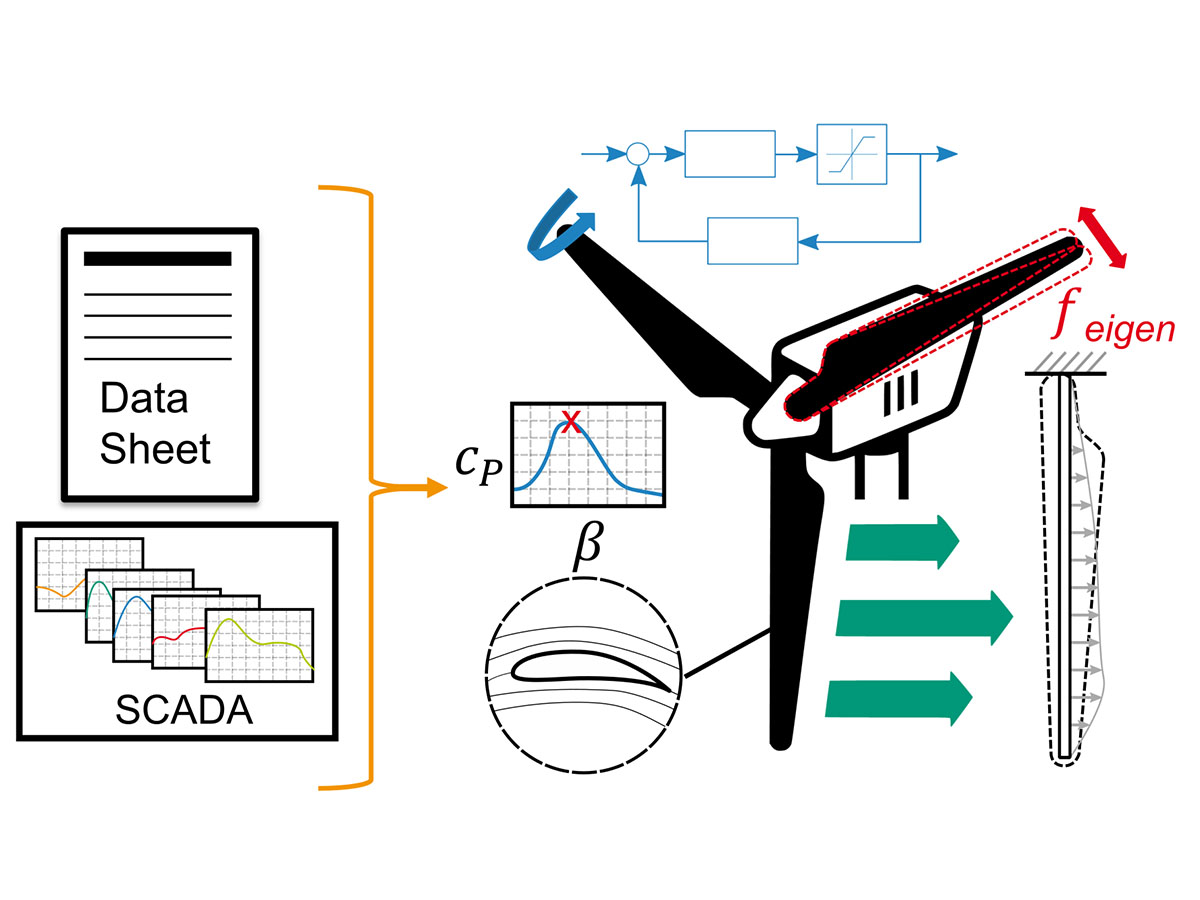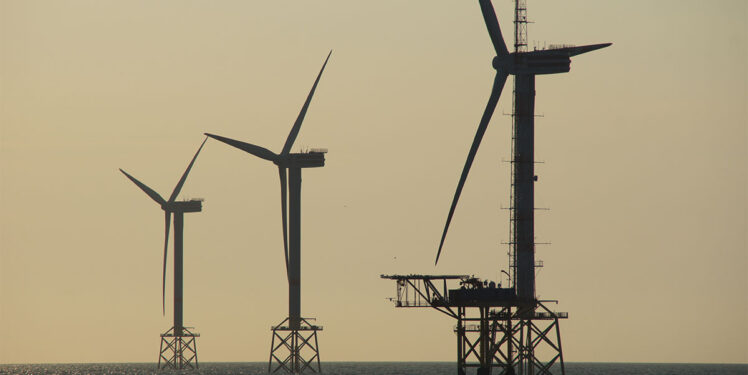Many analyses in the field of wind energy are based on virtual models. However, these simulation models are not freely available for every real wind turbine. Fraunhofer IWES solves this problem with an innovative approach.
Researchers at IWES are currently working on the Generic Wind Turbine Design Tool (GeWinDT) process to create a suitable virtual model for each wind turbine in the field. The virtual model enables the simulation of the turbine behavior and the turbine loads at the specific location of the real wind turbine. Usually, operators of wind turbines do not have access to this kind of load models, but they need them to obtain the information to assess issues such as the extension of the operating time or estimate the condition of the turbine. IWES serves this need.
In the GeWinDT process, the researchers are combining their expertise with a variety of open data sets, including databases on turbine parameters and generic wind turbine models from the scope of load calculation. The turbine parameters concern the power curve, rotor diameter, and tower height, to name a few. Usually, these parameters are available to the turbine operator and the virtual model is then created in collaboration. In the next step, the scientists combine weighted interpolation and optimization approaches to determine the design of the complex wind turbine rotor. The geometric parameters and aerodynamic properties are established with the help of a database. The virtual model is finally completed by a detailed tower design. Measurement data are utilized to calibrate the dynamics and natural frequencies of the model to match the wind turbine in the field. To ensure the plausibility of the model, the IWES experts use a validated procedure consisting of dynamic simulations and optimization of the turbine control. In contrast to previous scaling approaches, this method involves development of a new design for the specific turbine and thus a new virtual model.

The virtual turbine models can be employed in a variety of ways
This design process enables economically relevant analyses of wind turbines with a higher level of detail. IWES uses the virtual turbine models to assess the lifetime consumption and the remaining useful lifetime of the wind turbine. For this purpose, the load calculation is carried out with the virtual model and the wind conditions at the turbine’s location. It is then possible to obtain the loads on the turbines and calculate their structural stability. A comparison with the design loads from the design phase of the wind turbine then provides the lifetime reserves.
The information from the virtual models also flows into an intelligent wind farm control system, which IWES uses to find an optimal operating point for the load of individual turbines and the generated power of the wind farm. The virtual models calculate influencing variables to assess the interaction of the individual turbines in the wind farm through their wakes.
Further possible applications of virtual models
Further applications of the GeWinDT process arise in the field of digitalization. A virtual model is always needed to build a “digital twin”: In the first step, IWES contributes by constructing the virtual model. In the second step, the virtual system is connected to the real system. In this process, the scientists draw on the expertise gained from the hardware-in-the-loop simulations at the IWES’ nacelle test stand – Dynamic Nacelle Testing Laboratory (DyNaLab). This wind turbine twin offers many virtual load and motion sensors, optimally complementing the standard sensor technology used in wind turbines. The virtual sensors provide the wind turbine operator with information about the turbine dynamics even in places where the installation of conventional sensors is too difficult or uneconomical. IWES is utilizing these new possibilities for system monitoring and early fault detection.
The topic of “virtual turbine models” has great potential: with the help of these models, it is possible not only to answers questions regarding lifetime or load estimation for operators, but also to conduct analyses for performance optimization in wind parks. As the “digital twin” of wind turbines, virtual models form the backbone for the digitalization of the wind industry.
More information here:
Turbine operation: Control systems keep everything running smoothly
Nacelle Testing and Examination of Electrical Characteristics (fraunhofer.de)

